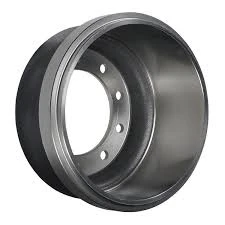Feb . 19, 2025 09:49
Back to list
forklift brake drum removal
Forklift brake drums, though often overlooked, play a crucial role in ensuring safe and efficient operations within industrial and warehouse settings. Removing a forklift brake drum is a task that, if done incorrectly, can lead to significant downtime and even injury. This guide aims to provide a detailed understanding of the steps involved in removing a brake drum, emphasizing safety, expertise, and professionalism.
In certain cases, brake drums may become seized due to rust or debris. Applying a penetrating lubricant and allowing it to sit can assist in loosening stubborn parts. Additionally, ensuring the proper alignment and even application of force when using a puller can prevent damage and facilitate a smoother removal process. Once removed, it is an opportune moment to inspect the drum and brake components for wear and damage. Look for signs of uneven wear, scoring, or cracks on the drum surface, as these issues necessitate replacement. Brake shoes and other related components should also be examined and replaced if they exhibit significant wear. Reassembling the components requires equal attention to detail and focus on safety. The brake drum and wheel should be reattached in reverse order of removal, ensuring all nuts and bolts are securely tightened to the manufacturer's specifications. Lower the forklift from the jack stands carefully, ensuring it returns evenly to the ground. Conducting a functional test post-maintenance is a wise practice to confirm the effective operation of the brake system. Actuating the brakes in a controlled environment can verify that everything is in working order before the forklift returns to service. In summary, the removal of a forklift brake drum involves a methodical process underscored by safety and expertise. By following these steps, you minimize operational risks and contribute to a safer working environment. Emphasizing the importance of regular maintenance and thorough inspections after removal can increase the longevity and reliability of forklift operations, ultimately reflecting a commitment to operational excellence and safety compliance.


In certain cases, brake drums may become seized due to rust or debris. Applying a penetrating lubricant and allowing it to sit can assist in loosening stubborn parts. Additionally, ensuring the proper alignment and even application of force when using a puller can prevent damage and facilitate a smoother removal process. Once removed, it is an opportune moment to inspect the drum and brake components for wear and damage. Look for signs of uneven wear, scoring, or cracks on the drum surface, as these issues necessitate replacement. Brake shoes and other related components should also be examined and replaced if they exhibit significant wear. Reassembling the components requires equal attention to detail and focus on safety. The brake drum and wheel should be reattached in reverse order of removal, ensuring all nuts and bolts are securely tightened to the manufacturer's specifications. Lower the forklift from the jack stands carefully, ensuring it returns evenly to the ground. Conducting a functional test post-maintenance is a wise practice to confirm the effective operation of the brake system. Actuating the brakes in a controlled environment can verify that everything is in working order before the forklift returns to service. In summary, the removal of a forklift brake drum involves a methodical process underscored by safety and expertise. By following these steps, you minimize operational risks and contribute to a safer working environment. Emphasizing the importance of regular maintenance and thorough inspections after removal can increase the longevity and reliability of forklift operations, ultimately reflecting a commitment to operational excellence and safety compliance.
Prev:
Next:
Latest news
-
Brake Drums for Trucks | OEM-Grade, Factory DirectNewsNov.10,2025
-
High-Performance Brake Drums for Trucks | OEM & ISONewsNov.10,2025
-
Brake Drums Built to Last — OEM-Grade, Balanced for TrucksNewsNov.10,2025
-
Brake Drums for Trucks – OEM-Grade, Durable, Low NoiseNewsNov.10,2025
-
Brake Drums for Trucks | OEM, ISO-Certified, Fast DeliveryNewsNov.10,2025
-
Brake Drums: OEM-Grade, Precision Balanced, Factory DirectNewsNov.03,2025
-
Brake Drums: Heavy-Duty, OEM-Grade, Precision-BalancedNewsNov.03,2025


